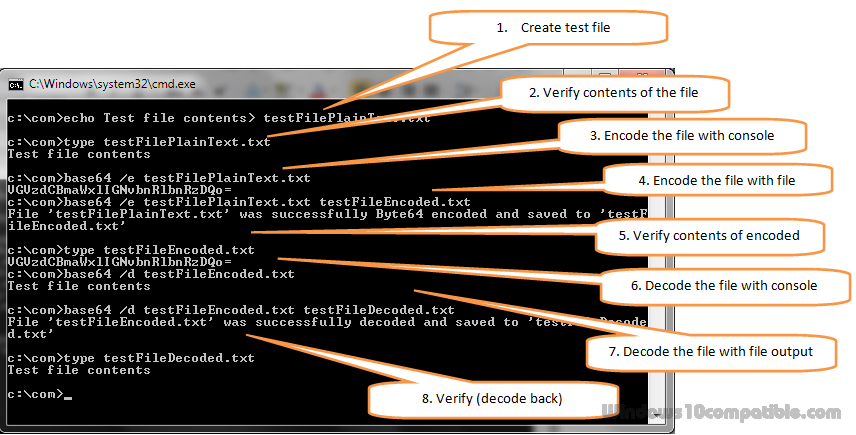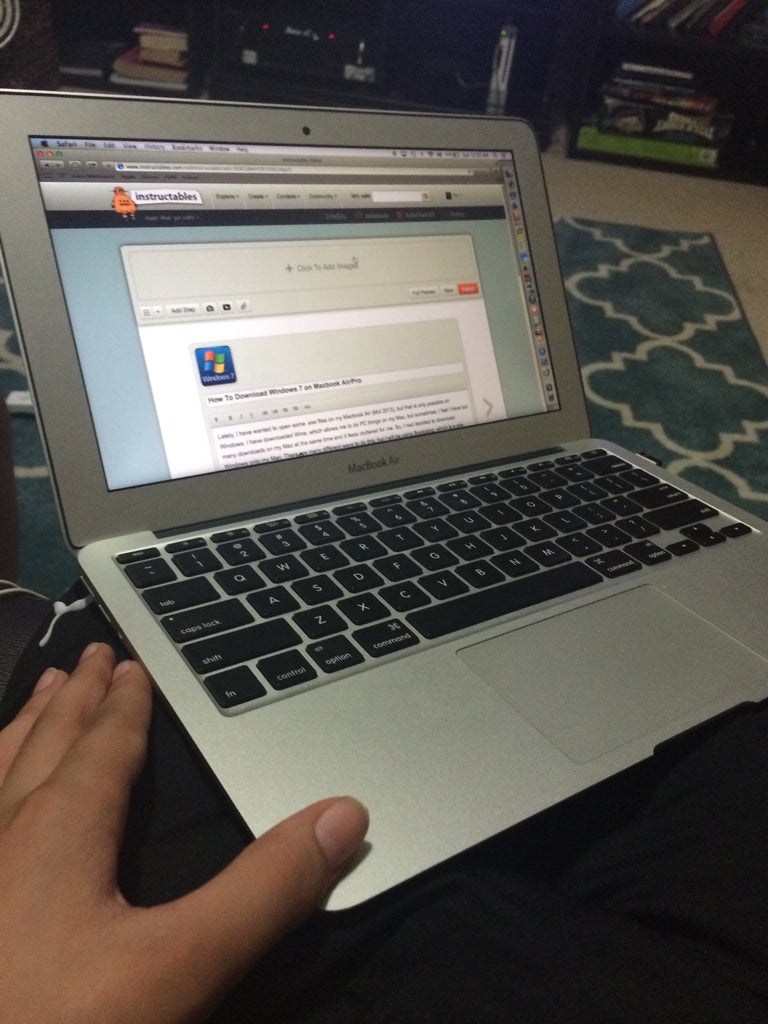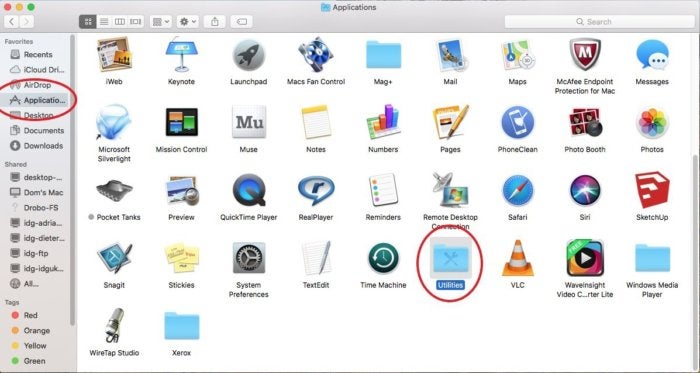As usual, launch Boot Camp Assistant app on your Mac and click Action tab on menu bar, where you can see an option named Download Windows Support Software. Now, choose your Windows Installer USB as the target location to store the driver files. For Mac users who also need to use a PC at work, home or just with specific applications, there is a solution. Using Boot Camp Assistant, you can install Windows 7 on your Intel-based Mac computer in its own partition.
Using Boot Camp, Microsoft’s Windows 7 can be installed and used on a Mac. This lets you enjoy the benefits of both operating systems, without migrating to new hardware.
How To Install Windows 7 On A Macbook Air

The minimum system requirements for installing Windows 7 are the availability of Mac OS X v10.6 Snow Leopard or later, along with Boot Camp 3.1. You will also need an optical drive and a Windows 7 full-installation disc.
Would you like to write for us? Well, we're looking for good writers who want to spread the word. Get in touch with us and we'll talk...
A 32-bit version of Windows 7 will work with an iMac or MacBook Pro launched in 2007 or later, and any Intel-based Mac Pro, MacBook, or Mac mini. The 64-bit version of Windows 7 will work with Mac Pro or MacBook Pro launched in 2008 or later, and any iMac or MacBook, introduced in 2009 or later.
If you do not have Boot Camp 3.1, go to the Apple menu and select Software Update, to get its latest version. Back up all your Mac data before beginning installation.
To begin with, Boot Camp will help you create a partition for Windows, as well as start the Windows installer.

Log into an administrator account and quit any open application. Log out other users on the computer. Go to Software Update and install all the available updates.
Go to Utilities folder in Applications, and open the Boot Camp Assistant. It will walk you through the entire process with the help of prompts. Boot Camp will help you select the size of your Windows partition and create a partition of the internal disc for Windows, without erasing existing data. Select NTFS format as it’s the most reliable option.
Do not delete any partition or create a new partition. Select only “Disk 0 Partition 3 BOOTCAMP” when installing. Then select ‘Drive Options (advanced)’ and click ‘Format’ and OK. Once done, click Next and the Windows partition will be formatted using NTFS file system.
In Boot Camp, select ‘Start the Windows installer‘.
Now, insert your installation disc and click on Start Installation in Boot Camp. You will find your computer starting from the Windows installation disc.
Would you like to write for us? Well, we're looking for good writers who want to spread the word. Get in touch with us and we'll talk...
You need to follow the instructions, and select custom installation.
After the Windows software is installed on your Mac, it will restart automatically. It will use Windows to start up. However, this does not complete your installation process.
You need to install the Boot Camp drivers for Windows. Eject the installation disc for Windows 7 and insert the Mac OS X disc. You will be prompted with instructions that you need to follow. Your computer will restart and you need to follow the instructions of the Found New Hardware Wizard or any other wizard that appears, and update the software drivers.
Once Windows and Boot Camp drivers are installed, you can start using Windows 7. When your computer starts, it will load in dual boot mode and let you choose between Mac OS X or Windows 7. Mission accomplished.
Related Posts
- Difference between Windows and Macintosh
Which operating system do you use on your computer? If it is either of Windows or Macintosh, wouldn't you like to understand the difference between them? If you would, you…
- Dual Boot Windows 7
Have you downloaded Windows 7 and would want to dual boot it with the operating system that you have on your machine? Well it is not difficult. There are just…
- How to Right Click on a Mac
People who are used to working on a Windows operating system find it difficult to perform various tasks on Mac computers. This could be because of the absence of 'right…
What you need to install Windows 10 on Mac
Can You Download Windows 7 On A Macbook Air
- MacBook introduced in 2015 or later
- MacBook Air introduced in 2012 or later
- MacBook Pro introduced in 2012 or later
- Mac mini introduced in 2012 or later
- iMac introduced in 2012 or later1
- iMac Pro (all models)
- Mac Pro introduced in 2013 or later
The latest macOS updates, which can include updates to Boot Camp Assistant. You will use Boot Camp Assistant to install Windows 10.
64GB or more free storage space on your Mac startup disk:

- Your Mac can have as little as 64GB of free storage space, but at least 128GB of free storage space provides the best experience. Automatic Windows updates require that much space or more.
- If you have an iMac Pro or Mac Pro with 128GB of memory (RAM) or more, your startup disk needs at least as much free storage space as your Mac has memory.2
An external USB flash drive with a storage capacity of 16GB or more, unless you're using a Mac that doesn't need a flash drive to install Windows.
A 64-bit version of Windows 10 Home or Windows 10 Pro on a disk image (ISO) or other installation media. If installing Windows on your Mac for the first time, this must be a full version of Windows, not an upgrade.
- If your copy of Windows came on a USB flash drive, or you have a Windows product key and no installation disc, download a Windows 10 disk image from Microsoft.
- If your copy of Windows came on a DVD, you might need to create a disk image of that DVD.
How to install Windows 10 on Mac
To install Windows, use Boot Camp Assistant, which is included with your Mac.
1. Use Boot Camp Assistant to create a Windows partition
Open Boot Camp Assistant, which is in the Utilities folder of your Applications folder. Then follow the onscreen instructions.
- If you're asked to insert a USB drive, plug your USB flash drive into your Mac. Boot Camp Assistant will use it to create a bootable USB drive for Windows installation.
- When Boot Camp Assistant asks you to set the size of the Windows partition, remember the minimum storage-space requirements in the previous section. Set a partition size that meets your needs, because you can't change its size later.
2. Format the Windows (BOOTCAMP) partition
When Boot Camp Assistant finishes, your Mac restarts to the Windows installer. If the installer asks where to install Windows, select the BOOTCAMP partition and click Format. In most cases, the installer selects and formats the BOOTCAMP partition automatically.
3. Install Windows
Unplug any external devices that aren't necessary during installation. Then click Next and follow the onscreen instructions to begin installing Windows.
4. Use the Boot Camp installer in Windows
After Windows installation completes, your Mac starts up in Windows and opens a ”Welcome to the Boot Camp installer” window. Follow the onscreen instructions to install Boot Camp and Windows support software (drivers). You will be asked to restart when done.
- If the Boot Camp installer never opens, open the Boot Camp installer manually and use it to complete Boot Camp installation.
- If you have an external display connected to a Thunderbolt 3 port on your Mac, the display will be blank (black, gray, or blue) for up to 2 minutes during installation.
How to switch between Windows and macOS
Restart, then press and hold the Option (or Alt) ⌥ key during startup to switch between Windows and macOS.
Learn more
If you have one of these Mac models using OS X El Capitan 10.11 or later, you don't need a USB flash drive to install Windows:

- MacBook introduced in 2015 or later
- MacBook Air introduced in 2017 or later3
- MacBook Pro introduced in 2015 or later3
- iMac introduced in 2015 or later
- iMac Pro (all models)
- Mac Pro introduced in late 2013
To remove Windows from your Mac, use Boot Camp Assistant, not any other utility.
For more information about using Windows on your Mac, open Boot Camp Assistant and click the Open Boot Camp Help button.
1. If you're using an iMac (Retina 5K, 27-inch, Late 2014) or iMac (27-inch, Late 2013) or iMac (27-inch, Late 2012) with a 3TB hard drive and macOS Mojave or later, learn about an alert you might see during installation.
2. For example, if your Mac has 128GB of memory, its startup disk must have at least 128GB of storage space available for Windows. To see how much memory your Mac has, choose Apple menu > About This Mac. To see how much storage space is available, click the Storage tab in the same window.
3. These Mac models were offered with 128GB hard drives as an option. Apple recommends 256GB or larger hard drives so that you can create a Boot Camp partition of at least 128GB.
